Christopher Wren – astronomer, mathematician, physicist and inventor – is best known as the architect of St Paul’s Cathedral, one of Britain’s most iconic buildings
Words: Neil Jones
Sir Christopher Wren’s legacy
One evening in 1723 a servant came to wake his master from an unusually long post-dinner snooze at his London home, only to find that the venerable 90-year-old, had quietly passed away in his chair.
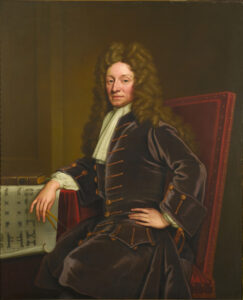
Thus death drew a close to the extraordinary life of a man whose accomplishments ranged through astronomy, mathematics and physics to anatomy and design. He had been a founder of the Royal Society, the world’s oldest scientific academy in continuous existence, and counted Sir Isaac Newton among fans of his work. His eclectic inventions included transparent beehives for scientific observation and a device to sow grain without waste.
Today, 300 years later, we remember Sir Christopher Wren less for being this energetic polymath and more as the revered architect who oversaw the rebuilding of London and St Paul’s Cathedral following the Great Fire of 1666. Yet it was the very diversity of his talents that had ensured his patronage and advancement in a great – if turbulent – age of enquiring 17th-century minds.
Sir Christopher Wren: Early life
Wren was born in 1632 at East Knoyle in Wiltshire, the only surviving son of a rector (three sisters also reached adulthood). He wasn’t quite three when his father was appointed Dean of Windsor and the family had a grand house within the precincts of Windsor Castle. But in 1642 their privileged existence on the edges of King Charles I’s court was shattered when civil war erupted and the family, loyally royalist, sought refuge with relations in the country.
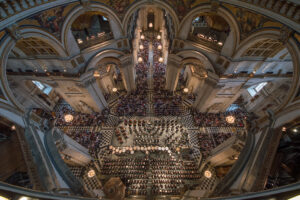
Young Wren nevertheless pursued his education at home and at school in Westminster, developing a particular interest in astronomy. The physician and anatomist Charles Scarburgh, on meeting the 15-year-old in 1647, spotted his precocious mathematical and drawing skills, and enlisted him to prepare experiments such as making pasteboard models to represent the functioning of muscles.
Wren later attended Oxford University, was appointed Professor of Astronomy at London’s Gresham College in 1657, and then Savilian Professor of Astronomy at Oxford in 1661. With his versatile genius he could still have followed many different careers as he entered his thirties, but his compass was about to be set in a specific direction.
Sir Christopher Wren and King Charles II
After 18 years of tumult, civil war and Cromwell’s Commonwealth, Charles II was restored to the throne in 1660. The kingly path soon crossed with Wren’s, not least through his backing for the learned circle of scientists in which Wren mixed and which became the Royal Society.
By now, Wren was also being drawn into architecture, a discipline where he could bring together so many of his formidable skills, from geometry to art, and in 1665 he went on a court-sponsored fact-finding trip to Paris to explore “esteem’d Fabricks” being built for Louis XIV and of interest to Charles. It gave Wren valuable insights into European trends, to add to England’s Palladian-inspired legacy of Inigo Jones, and in the coming years he would forge his own Anglicised Classicism mixed with the Baroque.
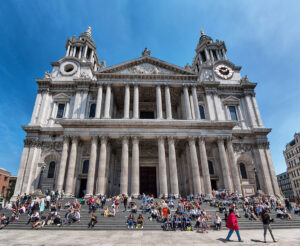
Also in 1665 Wren completed a new chapel for Pembroke College, Cambridge, commissioned by his Uncle Matthew, Bishop of Ely. For the Sheldonian Theatre at Oxford, finished in 1669 and still used for public university ceremonies, he created a space inspired by Roman theatres and topped it with an innovative timber roof truss to span the required 70 feet: a technical tour de force that won much admiration.
Sir Christopher Wren and St Paul’s Cathedral
But it was the Great Fire of London in 1666 that truly propelled Wren on his career as an architect. Appointed a member of the Rebuilding Commission for the devastated City, from 1669 he also became Surveyor General of the King’s Works: a post he would hold under no fewer than five subsequent monarchs. His architectural ‘practice’ would include his longstanding friend Robert Hooke as office manager and the upcoming, hugely talented Nicholas Hawksmoor as a draughtsman.

Wren was all for a wholesale re-design of the City on more regular lines reflecting continental influences and he declared it would be “a Shame to the Nation” to let the opportunity slip of making “This Place the most convenient City for Trade in the World”. Alas, his plans were too ambitious and were rejected in favour of basic street widening and improved standards of construction for new houses.
He nevertheless proceeded to oversee and collaborate on the rebuilding of more than 50 London churches, many noted for their elaborate steeples and for being deftly adapted to small, awkwardly shaped sites while retaining a wonderful sense of interior space.
Wren was knighted in 1673, the same year that he presented his Great Model for the rebuilding of what was to be the crowning glory of his endeavours on the large scale: St Paul’s Cathedral. On show today in the cathedral’s Trophy Room, the Great Model was actually Wren’s third (and favourite) proposal for a new cathedral, but it was rejected as being insufficiently “traditional” in appearance. Luckily, his subsequently approved compromise design permitted him to make changes as he went along – and he took full advantage to do so over the next 35 years.
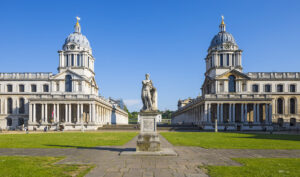
Construction and financial challenges combined with delays in shipping Portland stone (a popular material for London’s landmarks ever since) made progress slow and in 1697, with parliamentary impatience running high, Wren was put on half pay until St Paul’s was completed. There was no doubting his commitment – well into his sixties he “was content to be dragged up to the top of the building three times a-week in a basket, at the great hazard of his life” – and eventually, in 1711, the cathedral was officially declared to be finished.
Today St Paul’s is one of London’s – and England’s – most iconic landmarks: a highly individual blending of Classical and Baroque elements, its vast double-dome a truly remarkable feat of engineering and beauty.
In the decade from 1669 Wren was twice married and, tragically, twice widowed, leaving him with two sons and a daughter to be raised. Stifling his grief he threw himself into his work, not just at St Paul’s but also on other buildings that stretched him to the limit: the Royal Observatory at Greenwich; a classical library at Trinity College, Cambridge; The Royal Hospital Chelsea for veteran soldiers; and the superb Baroque complex of the Royal Hospital for Seamen, now the Old Royal Naval College, at Greenwich (where Hawksmoor carried out most of the work). For William III and Mary II, Wren also reconstructed parts of Hampton Court Palace in splendid Baroque style, and refashioned a house somewhat more modestly into Kensington Palace.
This is an extract, read the full version in the March/April issue of BRITAIN, available to buy here from 10 February.
Christopher Wren: The Quest for Knowledge is a new exhibition opening at St Paul’s this spring as part of Wren 300, a year-long collaboration between some of Wren’s most famous buildings celebrating the architect’s legacy.
Read more:

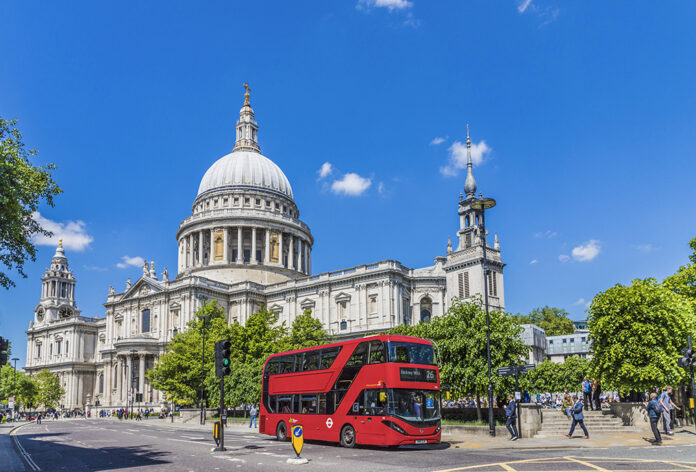




 © 2024
© 2024